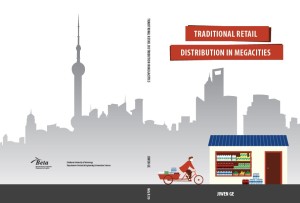On September 12, my student Jiwen Ge will defend his PhD Thesis “Traditional retail distribution in megacities”. As far as I know, this is the first set of analytical models that helps us better understand how manufacturers should operate in the megacities of developing markets. In these megacities, a significant portion of retail consists of nanostores, small mom-or-pop-operated retail stores that mainly sell consumer packaged goods. In other work, due to be completed soon, we are showing that this channel will prevail in these megacity environments for the foreseeable future.
Although the thesis is a PhD thesis, with hence as its main objective to develop theory, I do recommend reading the thesis to practiontioners, to develop a better understanding of this important channel. The introductory and concluding chapters have been written such that they accessible to a large audience and the thesis is open-access, so anyone can access the pdf version online from a few days after the defense will have taken place. If you are interested in receiving a (free) hardcopy, feel free to contact Jiwen by sending him an email, since the printing company mistakenly printed a few hundred copies too many ;-).
 In the thesis, using analytical mathematical modeling, four topics are addressed:
In the thesis, using analytical mathematical modeling, four topics are addressed:
1. How much sales effort should a supplying manufacturer execute, to optimize the tradeoff between the costs of extra effort (more pre-sales agents, less efficient routes) with the additional sales that this might bring?
2. How should a supplying manufacturer secure shelf space and cash, given that competing companies are trying to get access to the very same scarce resources at the store?
3. Should a manufacturer deliver nanostores directly, serving each store individually, or indirectly, making use of distributors or wholesalers?
4. In the new On-demand retail services that are developing in countries like Peru, China, and Indonesia, what is the optimal network size of nanostores to contract to have an efficient network with fast response to consumers?
In an upcoming series of blogposts, Jiwen en I will provide you with the key insights from each of the Chapters. The blog posts should become available one-by-one over the next few weeks. Just follow me on LinkedIn to get alerts.
Interestingly, in all cases that we study and try to understand, we closely link commercial decisions and logistics decisions. Serving a nanostore network successfully and growing revenue and profit in this large channel requires this. While in developed markets the logistics and commercial (marketing, sales) functions have become siloed over time, and maybe for a good reason, our work suggests that if you operate in traditional retail markets in developing countries this is definitely not a good strategy. The functions need to be closely aligned, and key decisions need to be taken jointly.
On a side note to the above but definitely as relevant to logistics or commercial executives in such environments, our book Reaching 50 Milllion Nanostores – Retail distribution in emerging megacities is also ready to go into print and should appear some time in October 2017. This book, edited by Edgar Blanco, Christopher Mejia, and myself, brings you the relevant concepts to be successful in serving the nanostore market, and provides a series of case studies of leading companies in these challenging environments.